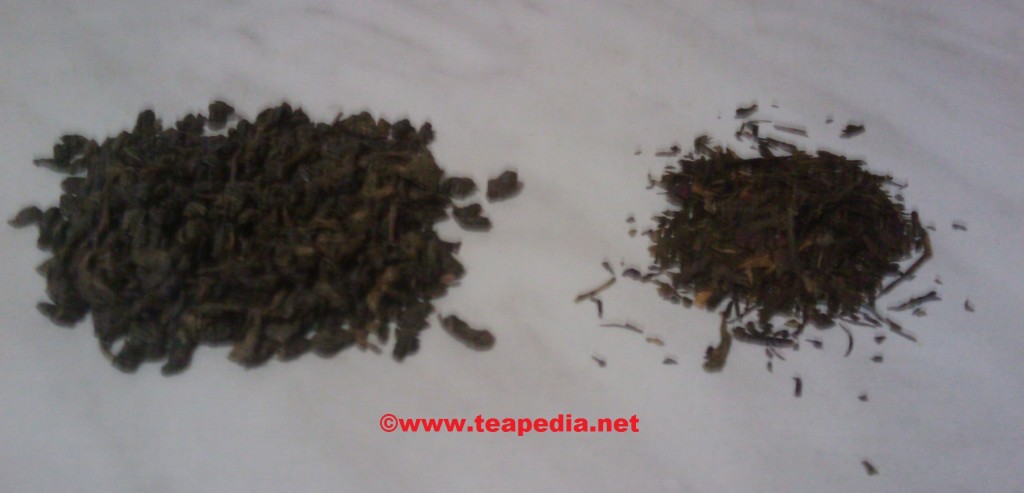History
Green tea is one of the oldest beverages in the world and its origins and history are somewhat interesting. For centuries, green tea or black tea remained the preferred drink in almost all the Asian countries. It was not until the sixteenth century that European explorers and traders popularized tea in the West. So it was very expensive. Russia became an important transit country for transporting tea. It is currently the second most consumed beverage after water worldwide.
Green tea is consumed mostly in Asian countries (China, Japan and India). In these countries, tea means prosperity, harmony, beauty, serenity and becomes a ritual. China is the largest producer of green tea.
Green tea has been used for years as a medicine and as a beverage. The difference between green tea and black tea is that the latter is produced by oxidizing the young leaves of the plant, while green tea leaves are produced by passing steam at high temperature. This procedure inactivates enzymes and oxidants and the polyphenols (tea beneficial compound) are intact.
Properties
Green tea comes from the same plant as black tea (Camellia sinensis), and is obtained by drying the leaves with the help of vapors (Japanese system) or by heating them (Chinese system). These processes hardly alter its chemical composition. The leaves of green tea are fermented after harvest and before the drying process, to retain the active ingredients of the plant (polyphenols). Polyphenols are essential to the physiology of plants, for pigmentation, growth, reproduction and protection against pests. Some of its polyphenols depend on the sunlight, therefore, are found in greater concentration in leaves and outer parts of the plant. Many of them have been studied in cancer prevention by its antioxidant capacity. Among them are: flavones, isoflavones, flavonoids, catechins and tannins. The polyphenol content varies in different plants. Green tea contains four polyphenols, commonly called catechins.
Varieties of Green Tea
There are numerous varieties of green tea, all very popular in China and Japan. The best known are:
-The Lung Ching: It is the most famous and means Dragon Well. Sweet and gold, is a common drink for monks, who have been using it for hundreds of years to clear the mind and calm the nerves.
-The Bancha: It is extracted from the stem of the plant of the same name.
-The Gunpowder: Boil sugar and mint and is popular in Morocco, where it is rolled into balls, and open with the hot water. It’s bittersweet.
-The Sencha: It is very popular in Japan, is yellow and tastes like vegetables.
-The Matcha: Its refreshing power is highly appreciated by the Japanese, who served the sparkling tea during their ceremonies.
-The Gyokuro: With its taste of freshly cut grass has become very popular in Japan.
-The Pi Lo Chun: Has a curious fruit aroma borrowed from the fruit trees that grow around it. Served in small coils of rolled leaves by hand, that also give its name, which means green snail.
Nutritional value
Among its components, one of the most important is the fluorine, so the green tea has verifiable benefits on dental plaque. Additional to fluoride, between minerals, we can find calcium, potassium and magnesium, and its vitamin components, especially the B vitamins (with an important role in the functioning of the nervous system) and the provitamin A.
How to prepare the best cup of green tea
The infusion is important. Green tea catechins are soluble in water, and the degree of extraction of these depends on the contact time of the sheets in the water. Therefore, to maximize the effects and properties of any tea it is best to make a long infusion of five or ten minutes. This achieves a tea less aromatic and rougher, just the opposite of what tea lovers want to taste, but not always health and taste go together. Water is the factor that determines the flavor and taste of tea. Mineral water is often the most appropriate to be used for tea. Chlorinated water does not leave a good tea taste; it must boil 2 to 3 minutes for the chlorine to be removed. Soft water is preferable, as calcium “thick” tannic acid content in the tea.
The green tea was not prepared with boiling water, as would be too bitter. Therefore, it should be poured into the teapot with the leaves just before boiling, or if you have reached the boiling point, it has to cool a moment before pouring it into the teapot.
A good teapot must have the patina that gives frequent use, it improves the flavor. The kettle has to be reserved only for tea. There is no need to wash, rinse should be enough, because soap or detergent can dissolve the patina and spoil the tea. The kettle is heated with a little amount of boiling water, which is rotated within, are pulled and allowed to dry before adding it to the infusion water. Then you enter a teaspoon (2 grams) per cup, pour hot water and cover the pot. Green tea leaves are allowed to stand in water between 1 and 3 minutes for the deployment of the aromas, but infusion may be left up to 4-5 minutes maximum. The longer you let it sit, the more pronounced will be the bitter taste. You can take it plain or sweetened. Sugar increases somewhat the aroma and honey detracts it instead. Some people add lemon or a cloud of milk. Enjoy!
This tea is one of my favorite teas.

